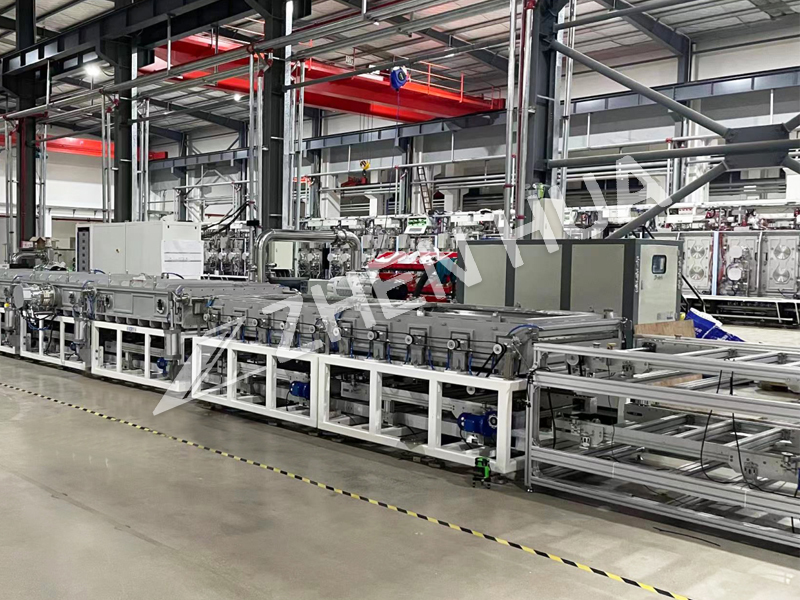In 2009, when calcite thin-film cells began to appear the conversion efficiency was only 3.8%, and increased very quickly, Unit 2018, the laboratory efficiency has exceeded 23%. The basic molecular formula of a chalcogenide compound is ABX3, and the A position is usually a metal ion, such as Cs+ or Rb+, or an organic functional group. Such as (CH3NH3;), [CH (NH2)2]+; B position is usually divalent cations, such as Pb2+ and Sn2+ ions; X position is usually halogen anions, such as Br-, I-, Cl-. By changing the components of the compounds, the forbidden bandwidth of chalcogenide compounds is adjustable between 1.2 and 3.1 eV. The high-efficiency photovoltaic conversion of chalcogenide cells at short-wavelengths, superimposed on cells with outstanding conversion performance at long-wavelengths, such as heterogeneous crystalline silicon cells, can theoretically obtain a photovoltaic conversion efficiency of more than 30%, breaking through the limit of the theoretical conversion efficiency of crystalline silicon cells of 29.4%. 2020, this stacked battery has already achieved a conversion efficiency of 29.15% in the Berlin Laboratory of Heimholtz, Germany, and the chalcogenide-crystalline silicon Stacked cell is considered to be one of the major battery technologies of the next generation.
The chalcogenide film layer was realized by a two-step method: first, porous Pbl2, and CsBr films were deposited on the surface of heterojunction cells with fluffy surfaces by co-evaporation, and then covered with an organohalide solution (FAI, FABr) by spin-coating. The organic halide solution penetrates into the pores of the vapor-deposited inorganic film and then reacts and crystallizes at 150 degrees Celsius to form a chalcogenide film layer. The thickness of the chalcogenide film thus obtained was 400-500 nm, and it was connected in series with the underlying heterojunction cell to optimize current matching. The electron transport layers on the chalcogenide film are LiF and C60, obtained sequentially by thermal vapor deposition, followed by atomic layer deposition of a buffer layer, Sn02, and magnetron sputtering of TCO as a transparent front electrode. The reliability of this stacked cell is better than that of the chalcogenide single-layer cell, but the stability of the chalcogenide film under the environmental influences of water vapor, light, and heat still needs to be improved.
Post time: Oct-20-2023


